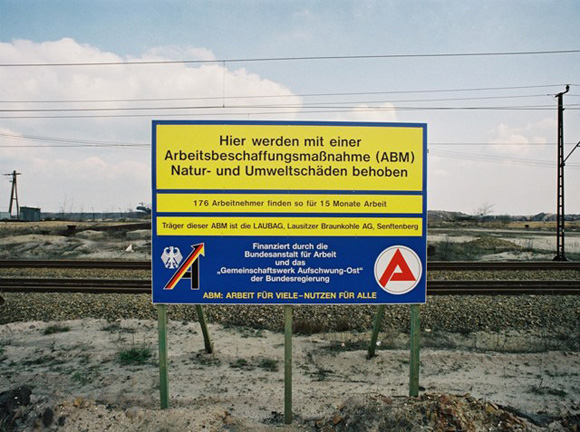Source

Source: © REGIERUNGonline/Schambeck
Inherited ecological damage often stood in the way of privatization because it was difficult or impossible to assess the subsequent costs to investors. The chemical and mining industries of the former German Democratic Republic were particularly hard hit by this problem. An opportunity was thus created to exempt investors from the obligations resulting from hazardous waste. Through the “Administrative Agreement on the Settlement of Financing Inherited Ecological Damage” of December 1, 1992, the federal government and the federal states [Länder] regulated the costs of the exemptions (and the necessary decontaminations) anew. Since approximately 100,000 workers in the mining industry had lost their jobs through restructuring, an attempt was made to recruit up to 16,000 laid off workers to decontaminate and recultivate mining areas.
This sign announces a job-creation measure [Arbeitsbeschaffungsmaßnahme or ABM] to eliminate environmental damage caused by lignite open mining near Klettwitz (Brandenburg). The “Joint Venture Upswing East” set aside a total of 5.5 billion Deutschmarks for job-creation measures alone. The sign reads: "Damage to Nature and the Environment are being eliminated here through a job-creation measure. 176 people will find work for 15 months. The sponsor of this job-creation measure is the [company] LAUBAG, Lausitzer Braunkohle AG, Senftenberg. Financed by the Federal Agency for Work and the federal government's "Joint Venture Upswing East." Job-Creation measures: work for many – benefit to all."

Source: © REGIERUNGonline/Schambeck